
Flavors of Morocco: A culinary journey
FoodSpotlighting Morocco's rich cuisine, from tajine to couscous!
May 28, 2024
Sep 30, 2024
Share
Share this link via
Copy Link
https://nukta.com/the-flavors-of-morocco-a-culinary-journey
Growing up as a Moroccan kid caught between two cultures, the Moroccan kitchen was a continuous journey of discovery. From the first experience of finally enjoying the taste of snails (ghlal) and cooked rabbit tajine with lemon and almonds.
To understanding the vital role of zaitoun (olives), learning that drizzling olive oil on eggs is a culinary must, as olive oil is a staple in countless dishes. Moroccan cuisine has a wide range of dishes that change with the seasons and special occasions.
While it’s impossible to cover them all, let me take you through some standout favorites that are perfect for anyone trying Moroccan cuisine for the first time!
Tajine
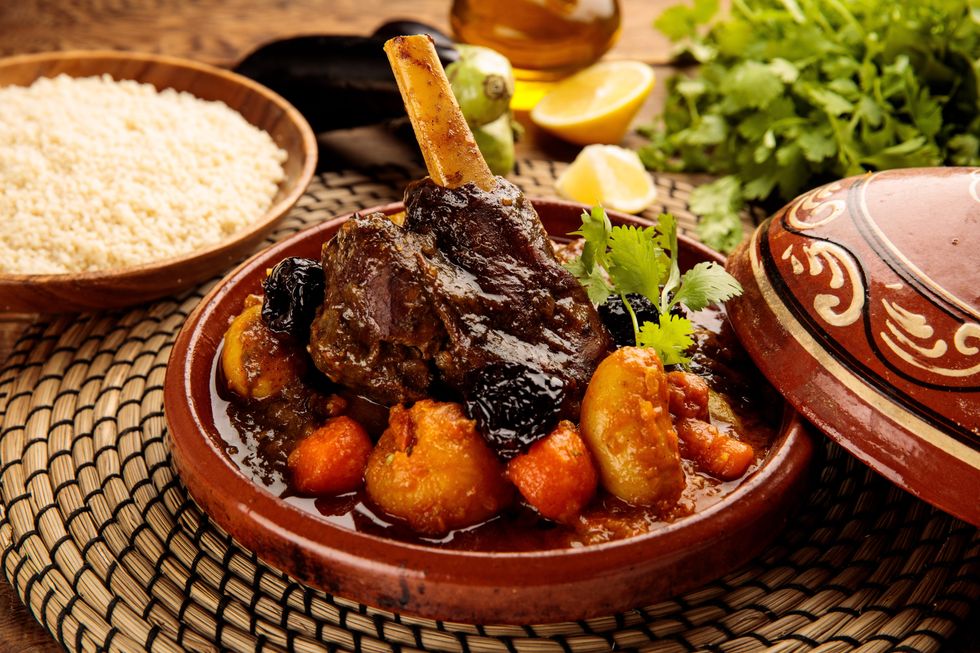
Lamb Tajine with potatoes
Shutterstock
Also spelled: ‘’tagine’’, is a slow-cooked stew typically featuring meat (such as lamb, beef, or chicken), vegetables, and a variety of spices. The ingredients are layered in the pot, so the flavors blend and intensify slowly. The origin of the tajine as a cooking pot dates back to North Africa’s first inhabitants; the Amazigh, also known as Berbers. Are you on a diet? No problem! Due to its use of fresh ingredients, lean meats, and spices, tagine is considered a healthy and nutritious meal option.
Couscous

Couscous being served
Shutterstock
TGIF, time for couscous! Fridays in Morocco are all about enjoying couscous at lunchtime. Although it looks like a grain, couscous is actually a type of pasta made from semolina wheat. The tiny granules are steamed and fluffed to create their light texture. It's traditionally topped with a savory stew of meat and vegetables. Couscous is considered the national dish of several North African countries, including Morocco, Algeria, and Tunisia, each having its own unique variations and preparations.
Pastilla
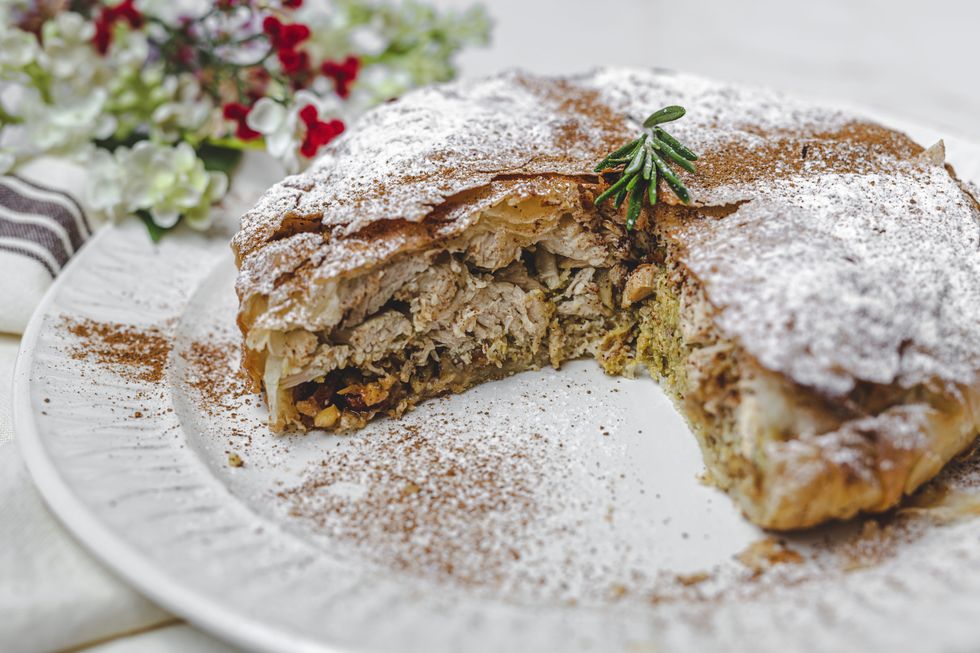
Chicken Pastilla with almonds, cinnamon and powdered sugar on top
Shutterstock
Also known as ‘’b’stilla’’, is a Moroccan pie that balances sweet and savory flavors. Traditionally, shredded chicken with a mixture of sweet almonds and cinnamon, is wrapped up in crispy phyllo dough. It was historically reserved for special occasions, so you will see it a lot at Moroccan weddings, family gatherings and celebrations. Its golden, powdered sugar-dusted crust makes it as visually appealing as it is delicious.
Not a fan of the sweet & savory combo? Try the more spicy variant: the Moroccan fish b'stilla, which is filled with seafood, shrimp, calamari and vermicelli stuffing.
Harira Soup

Harira soup with vermicelli
Shutterstock
Harira is a traditional soup, especially during the month of Ramadan. Made with tomatoes, lentils, chickpeas, and a mix of spices, this makes it a wholesome and balanced dish, providing protein, fiber, and essential vitamins. It is often eaten to break the fast at sunset with dates and sweet chebakia on the side!
Moroccan Mint Tea
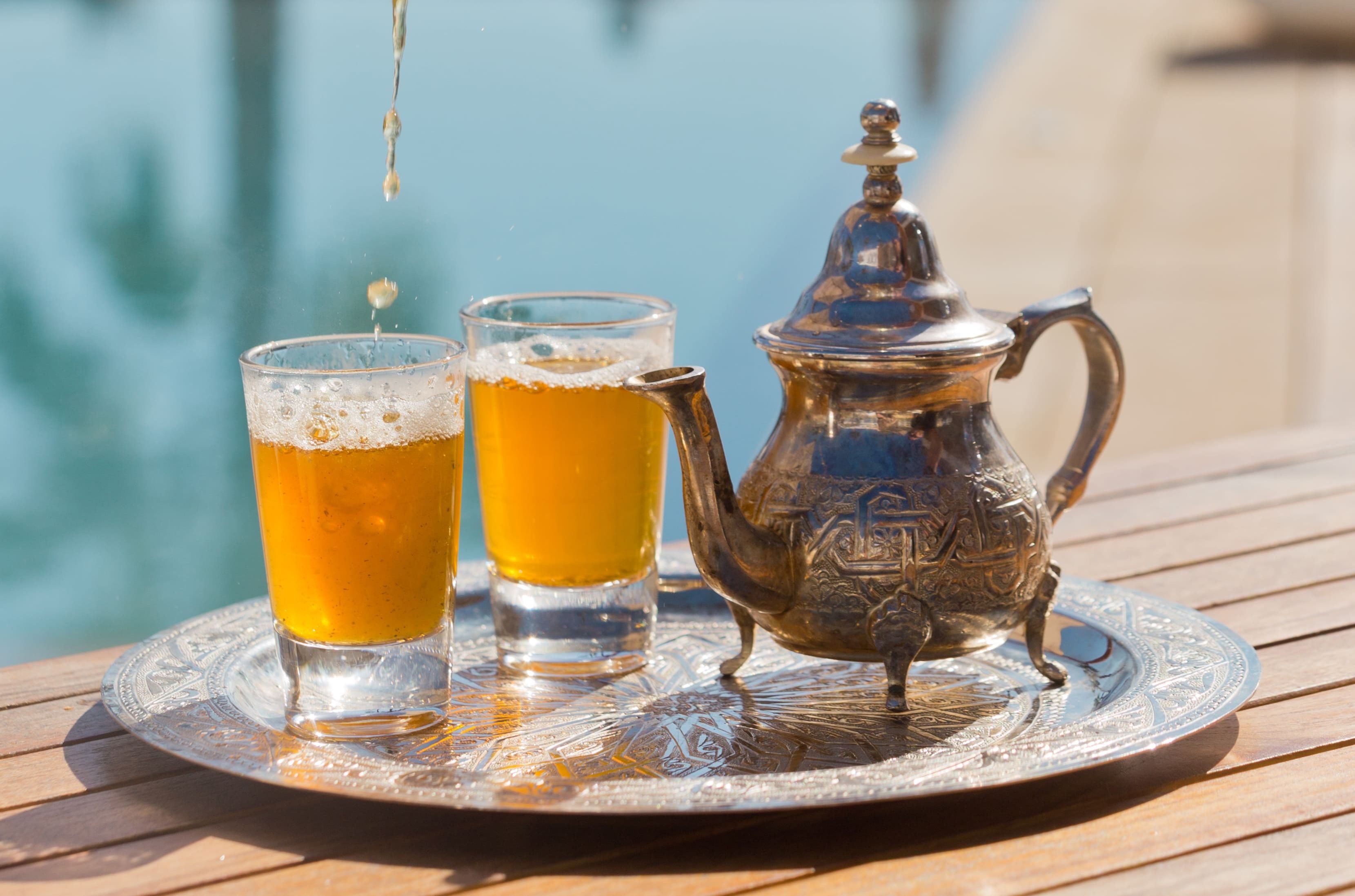
Moroccan Mint Tea being poured
Shutterstock
Moroccan mint tea, or "atay," is the national drink, made with green tea, fresh mint, and sugar. Traditionally poured from a height for a foamy top, it symbolizes respect, warmth and appreciation towards the guest. It pairs particularly well with spicy and flavorful foods, making it a drink for throughout the day.
Moroccan Street Food
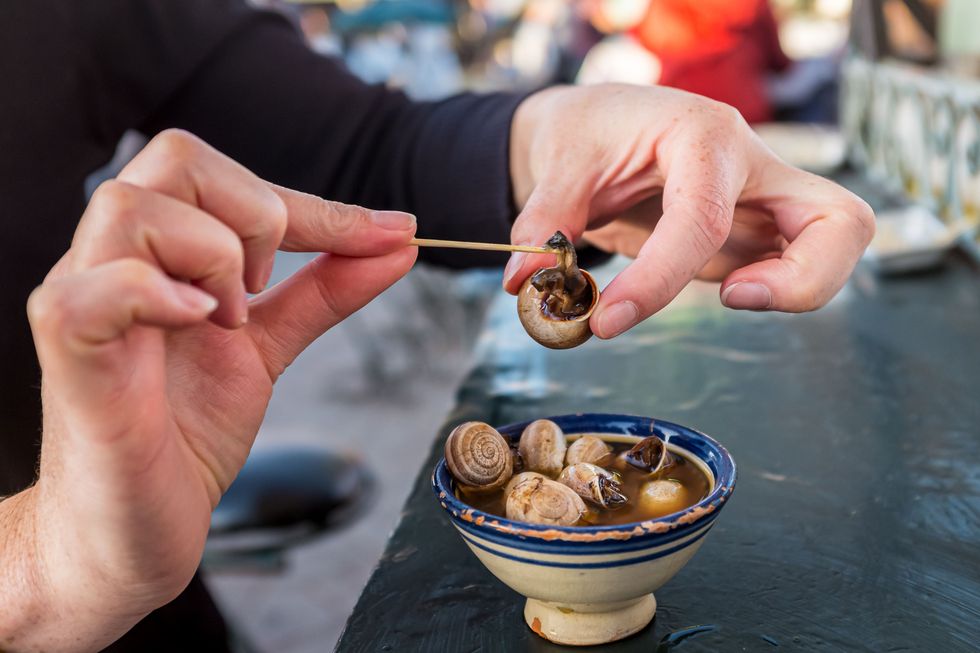
Person eating snail with a toothpick
Shutterstock
Morocco’s top street snack: snails, or "ghlal." A snail stew made from over 15 herbs and spices, served at roadside stalls, souks or simply made at home. Snails are a great source of iron, protein, magnesium and vitamins, making it a healthy snack. Use a toothpick to draw the snail out of its shell & bon appetite!
Moroccan Breakfast
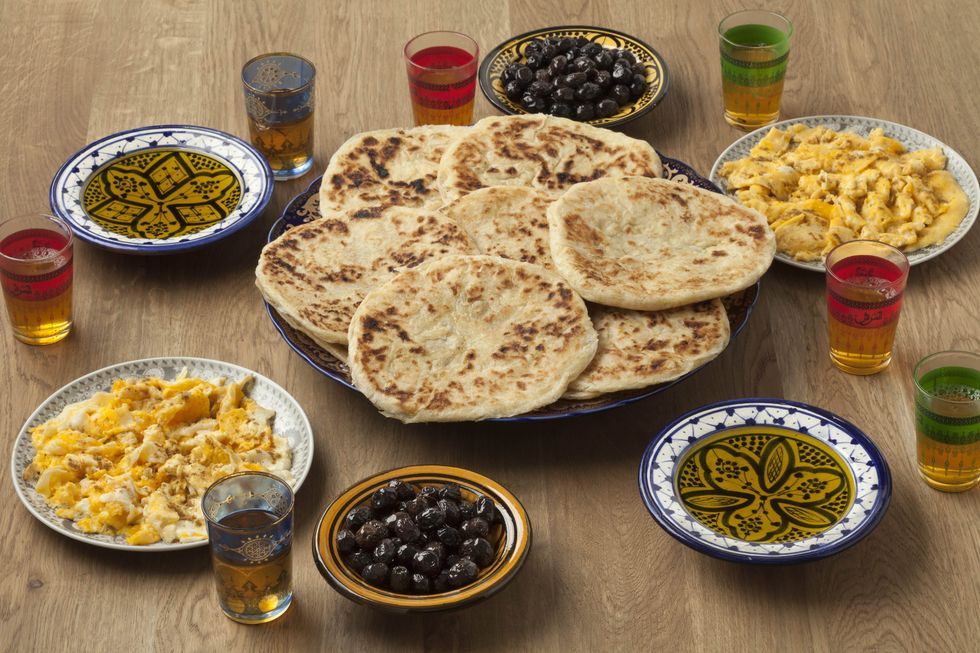
Moroccan olive oil, mint tea, egg, olives and bread
Shutterstock
Moroccan breakfast known as ''ftour'' is a varied meal which typically consists of a combination of bread, pastries, spreads, dairy products, and beverages. Popular types of bread include "khobz" (round Moroccan bread), "beghrir" (spongy pancakes), "msemen" (folded and fried flatbread), "harcha" (semolina pancakes), and "sfenj" (Moroccan doughnuts) Accompanied by honey, olive oil, and fresh cheese. Often served with olives, fried eggs and of course fresh mint tea to start the morning.
From humble harira to the more celebratory b’stilla, each dish tells a story of its own and provides a deeper understanding of Moroccan culture and the hospitality that accompanies each meal. Whether you’re trying Moroccan cuisine for the first time or revisiting your usual favorites, here are some easy, step-by-step recipes to get you started. Moroccan Beef Tajine or its variant Moroccan Chicken Tajine, an authentic Moroccan Couscous with seven vegetables and a delicious cup of Moroccan Mint Tea.
Back To Top
Company
© 2025 NUKTA. Owned by Pulse Media Networks FZ-LLC All Rights Reserved.



Comments
See what people are discussing